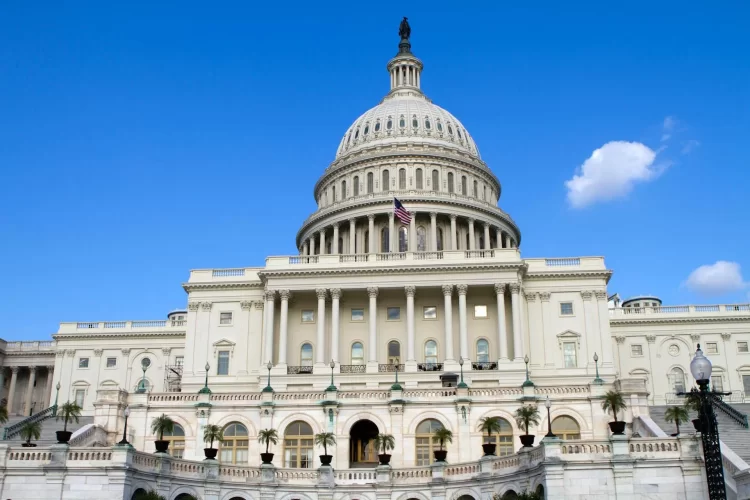In a significant policy shift, the Trump administration has set forth a structured initiative aimed at relocating federal employees from Washington, D.C., to various parts of the country.
The Department of Government Efficiency (DOGE) issued a memo detailing both the short-term and long-term strategies that federal agencies must implement to achieve this objective. This move is intended to enhance national representation, reduce costs, and increase workforce efficiency in the public sector.
Why Decentralization Matters for Government Operations
For decades, Washington, D.C. has served as the epicenter of federal operations. However, the increasing costs of maintaining government agencies in one concentrated geographic area, coupled with the rise of remote work technologies, have prompted discussions on decentralization.
By relocating departments to various regions, the government aims to improve operational agility and optimize employee time tracking. This approach could lower the cost of living expenses for employees while ensuring a broader distribution of administrative functions.
Potential Benefits of Moving Federal Workers
The transition of government functions to multiple locations presents several advantages for both employees and taxpayers. Some of the key benefits include:
- Cost Efficiency: Reduced office leasing costs and lower wage adjustments in lower-cost regions.
- Increased Productivity: Enhanced employee satisfaction and improved productivity tracking through distributed work environments.
- Workforce Diversity: Expanding hiring pools by tapping into talent across various states and regions.
- Technological Advancement: Greater reliance on digital tools, such as time management tools and project time tracking solutions.
This strategic shift aligns with broader workforce trends, emphasizing the importance of digital transformation and flexible work arrangements.
Implementation Phases of the DOGE Workforce Redistribution
The relocation will proceed in a structured manner to minimize disruption. According to the memo, the implementation follows a well-defined timeline that includes three core phases:
Phase 1: Assessment and Planning
Federal agencies are required to conduct internal assessments to determine the feasibility of relocating various departments. This involves identifying positions that can function effectively outside Washington, D.C., and ensuring the necessary infrastructure supports distributed workforces.
Phase 2: Pilot Relocations
Selected agencies will initiate pilot programs to transition specific departments or divisions to alternate locations. During this stage, remote work tracking tools and time tracking software will play a crucial role in ensuring operational continuity.
Phase 3: Full-Scale Execution
Following a successful pilot phase, agencies will fully implement relocation plans, moving designated employees and establishing remote or hybrid work policies. This phase will be critical for determining long-term sustainability and measuring the impact on public sector work time management.
Key Considerations for Employees and Agencies
While the plan presents numerous advantages, it also raises important considerations for both employees and government agencies. Successfully transitioning to new locations will require careful management of logistics, employee concerns, and performance oversight.
What Agencies Must Address
To ensure a smooth transition, agencies will need to:
- Enhance Digital Capabilities: Invest in productivity tracking tools and remote collaboration platforms.
- Establish Transparent Communication: Provide employees with clear guidelines and timelines for expected relocations.
- Monitor Performance: Utilize employee time tracking systems to assess work efficiency across distributed locations.
- Support Workforce Adaptation: Offer relocation assistance and hybrid work options where feasible.
These measures will help agencies maintain operational effectiveness while ensuring federal employees experience a smoother transition.
Technology’s Role in the Transition
As federal employees move away from traditional office spaces in Washington, new tracking tools will be essential to maintaining accountability and efficiency. Time tracking software and employee productivity monitoring will be critical in ensuring work remains on schedule, regardless of geographic dispersion.
Agencies are expected to adopt digital solutions that facilitate:
- Automated time tracking for accurate work hour recordings.
- Integration with remote work tracking platforms to evaluate task completion rates.
- Data analytics to assess department-wide performance trends.
Leveraging these technologies will allow agencies to oversee employees effectively while improving federal workforce productivity.
The Future of Federal Workforce Distribution
The decentralization of federal jobs represents a strategic shift in how government operations are managed. By adopting enhanced workforce distribution models, leveraging new technologies, and implementing structured relocation phases, agencies can improve efficiency while reducing costs.
This transition underscores the increasing importance of work time management and flexible work arrangements in modern governance.
As federal agencies embrace this change, businesses can take inspiration from strategies such as productivity tracking and automated time tracking tools to optimize their own operational models.
Companies exploring workforce flexibility can benefit from implementing effective time management solutions. To discover how your business can enhance efficiency, consider trying a time tracker free trial today.

